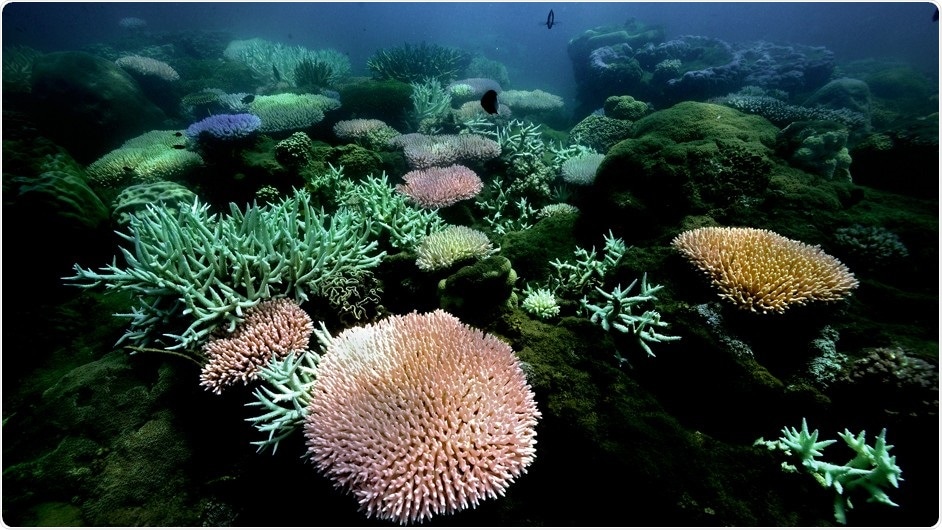Globally, the rising water temperatures caused by pollution, global warming, and human activities have considerably impacted the coral reefs that are dwindling at an alarming speed. In the past 30 years, 50% of the Great Barrier Reef in Australia has lost its coral cover.

Bleached corals on Pandora Reef, Great Barrier Reef in 2017. Image Credit: Institute of Marine Science/Eric Matson.
New research conducted by Columbia University offers more proof that genetic sequencing can expose evolutionary changes in reef-building corals that someday could help researchers find out the types of strains that can possibly adjust to warmer seas.
The results of the study were published in the Science journal on July 16th, 2020. They provide an opportunity to look into the genetic processes that enable certain corals to tolerate significant climatic fluctuations that could enhance or complement present efforts taken for preservation.
We need to use as many tools as possible to intervene or we will continue to see coral reefs vanish. Using genomics can help identify which corals have the capacity to live at higher temperatures and reveal genetic variants associated with climate resilience.”
Zachary Fuller, Study First Author and Postdoctoral Researcher, Department of Biology, Columbia University
Located across the world in tropical oceans, coral reefs are among the most valuable and diverse ecosystems on Earth. They are, in fact, living animal colonies and significant for a number of reasons. Reefs offer a habitat for a wide range of marine species, help sustain the tourism and fishing industries, and protect coastlines from floods, storms, and erosion.
Globally, reefs experienced their first wave of mass bleaching in the late 1990s. Such a mass bleaching happens when increased water temperatures damage the symbiotic association with the colorful algae of a colony, causing the corals to become white.
This loss effectively starves them because corals depend on the photosynthetic algae that reside inside their tissues for nutrients. While reefs are capable of recovering from bleaching, prolonged exposure to environmental stress can ultimately destroy them.
The research done by Columbia University predicts, to a certain extent, which corals can probably tolerate the bleaching events and endure unusually high temperatures.
Genomics allows us to examine the genetic differences that could influence survival and bleaching tolerance, helping us work out how we might support coral health.”
Molly Przeworski, Study Senior Author and Professor, Departments of Biological Sciences and Systems Biology, Columbia University
Fuller, Przeworski, and their colleagues from the Australian Marine Institute studied a total of 237 samples obtained from 12 different locations along the Great Barrier Reef, producing the highest quality sequences of any corals, so far.
The sequencing enabled the scientists to look over the genome for signatures where adaptation took place and to identify genetically distinct changes linked to bleaching tolerance.
What we discovered is that no single gene was responsible for differences in a coral’s response to bleaching, but instead many genetic variants influence the trait. On their own, each has a very small effect, but when taken together we can use all these variants to predict which corals may be able to survive in the face of hotter seas.”
Zachary Fuller, Study First Author and Postdoctoral Researcher, Department of Biology, Columbia University
According to Fuller and Przeworski, their outcomes create an opportunity for coral biologists to additionally look for strains that can better adapt to the warming ocean and allow analogous methods that can be applied to other kinds of species most at risk from climate change.
“The best chance we have to save what’s left of the Earth’s coral reefs is to mitigate the effects of climate change by rapidly reducing greenhouse gas emissions. In the meantime, genetic approaches may be able to buy us time,” Fuller concluded.
Source:
Journal reference:
Fuller, Z. L., et al. (2020) Population genetics of the coral Acropora millepora: Toward genomic prediction of bleaching. Science. doi.org/10.1126/science.aba4674.